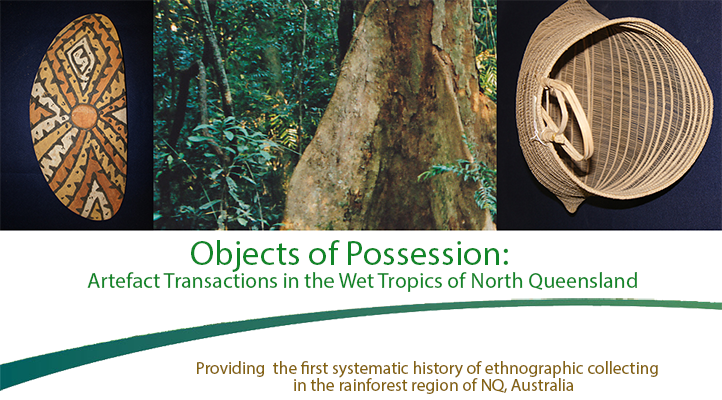Author: Corinna Erckenbrecht and Rosita Henry
Collector: Maximilian Buchner
Born: 25 April 1846 in Munich, Germany
Died: 7 May 1921 in Munich, Germany
Active: Buchner collected in North Queensland in early 1889.
Background biography: Max Buchner was the curator/director of the Museum of Ethnology in Munich, Germany, from1887 to 1907. Before this appointment he had worked as a medical doctor on board one of the ships of the Norddeutscher Lloyd shipping company. He began work with this company in 1875, travelling all around the world.
Buchner came to Australia in 1888 to attend the Melbourne Centennial International Exhibition, after which he travelled to Sydney, then north to Cairns and Cooktown on his way to New Guinea and China. Wherever he visited he took the opportunity to collect artefacts for his museum. In his report on this trip, published much later in his book (1919), he claims that he had managed to collect 1200 artefacts before “Australia was done with”. The original quote in German reads: “Ehe Australien abgetan war, hatte ich über 1200 Nummern” (Buchner 1919: 6). However, not all of these were from Aboriginal Australia.
Buchner was in Cooktown around February 1889 where he witnessed a fight between Aboriginal groups. The police confiscated the weapons (spears and spearthrowers) in order to destroy them, but Buchner successfully persuaded the police to give them to him. One of these spearthrowers is still in the collection of the Munich Museum. According to Buchner’s description, the points of the spears were no longer made of sharpened bone but of stolen fencing wire, which in his eyes diminished their authenticity (Buchner 1919: 9).
The museum at Munich lost many artefacts during the two World Wars. Only about 550 artefacts from Australia have survived. Of these, very few are from Buchner’s collection from the Wet Tropics and they are not in very good shape. There are headbands from the “Endeavour River Tribe”, baskets (including one bicornual basket), the spearthrowers mentioned above from the Cooktown area, and a wooden sword. According to Buchner, he found the baskets in the junk-room of the hotel where he was staying and the landlady gave them to him. However, he stresses that he bought the headbands for sixpence and 2 pieces of tobacco, directly from Aboriginal people.
Unfortunately Buchner’s notes and his book (1919) contain only very sketchy information about his time in north Queensland and/or were written in nineteenth-century shorthand (“Gabelsberger-System”).
Sources: Buchner, Max. 1905. Das Bumerangwerfen. In: Globus. Illustrierte Zeitschrift für Länder- und Völkerkunde, Bd. 88, pp. 37-42, pp. 63-66. Berlin.
Buchner, Max. 1919: Eine orientalische Reise und ein Königliches Museum. Rücksichtslose Erinnerungen. Piloty & Loehle, München.
Erckenbrecht, Corinna. 2011. Summary of the Research at the Munich Museum of Ethnology on 9 July 2008. Manuscript produced for the ARC Project ‘Objects of Possession: Artefact Transactions in the Wet Tropics of North Queensland, 1870-2013’: https://espaces.edu.au/arcresearch-space/collectors/buchner/max-buchner/view
